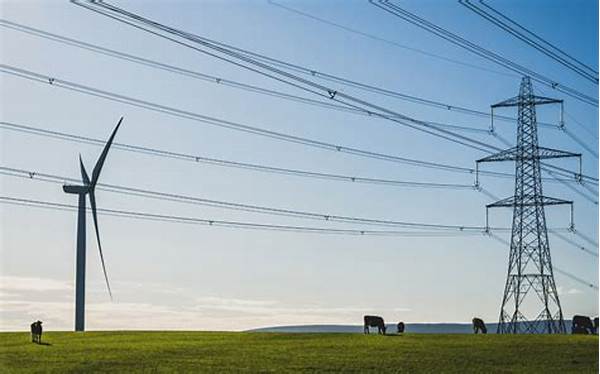Ever thought about how cool it would be to have a completely self-sufficient electricity system right where you live, especially if you’re in a remote area? Well, autonomous electricity systems for rural areas are just the ticket! Imagine living in a picturesque village miles away from the hustle and bustle, yet still comfortably powered by the sun or wind. It’s like living off-grid, but with all the convenience of modern technology. Intrigued? Let’s dive into how these systems work and why they’re a game-changer for rural communities.
Read Now : Upscale Couples-only Vacation Spots
The Magic of Self-Sufficiency
Autonomous electricity systems for rural areas aren’t just a sci-fi dream anymore. They’re very real and incredibly practical. These systems typically combine renewable energy sources like solar panels or small wind turbines with storage options. The whole idea is to capture energy from the sun or wind and store it for when it’s needed, ensuring a consistent power supply. This eliminates the dependency on distant, possibly unreliable, power grids.
Now, picture a small village equipped with these systems. Kids doing their homework under electric lights, medical stations operational around the clock, and homes comfortably warm or cool depending on the season. The autonomy doesn’t just mean electricity; it means growth and opportunity. Essentially, these systems offer the freedom to harness nature, providing power solutions that work like magic for communities that might otherwise be left in the dark.
Moreover, autonomous electricity systems for rural areas also promote environmental sustainability. By tapping into renewable resources, these systems reduce the reliance on fossil fuels. It’s a win-win because it protects the environment while connecting everyone to the energy grid, figuratively speaking. It’s impressive how technology can take rural living and make it an example of sustainable living!
What Makes Them So Effective?
1. No Grid, No Problem: Autonomous electricity systems for rural areas mean cutting the cord on traditional power grids. Independence is empowering!
2. Eco-Friendly: Utilizing clean, renewable sources like solar and wind, these systems are gentle on the earth.
3. Cost-Effective in the Long Run: Initial setup might seem pricey, but the reduced utility bills make it worthwhile.
4. Low Maintenance: Once installed, these systems require minimal upkeep, which is great for remote areas.
5. Scalable Solutions: From a single home to an entire village, these systems can be scaled to meet the community’s needs.
Harnessing Nature’s Power
Let’s talk a bit more about how exactly autonomous electricity systems for rural areas harness natural resources. Think about solar panels basking in the sun all day, converting sunlight into electricity. These panels are connected to inverters and batteries that store the harnessed energy. So, even when the sun goes down or clouds roll in, there’s still power available. It’s like bottling sunshine!
Besides solar, wind turbines are another fantastic option. These tall, graceful structures spin with the wind, turning kinetic energy into electricity. Rural areas generally have more open spaces, which makes them perfect places for wind energy harnessing. This combination of power sources ensures that energy isn’t just available, it’s abundant.
Read Now : Child-friendly Five-star Resorts
With autonomous electricity systems for rural areas, places previously overlooked can now thrive. Schools can have computers, hospitals can have refrigeration for medicines, and businesses can operate independently. It’s all about unlocking potential and giving rural areas the tools to shine brighter than ever.
Empowering Rural Communities
The implementation of autonomous electricity systems for rural areas equals empowerment. When communities gain control over their energy resources, amazing changes occur. First off, the education level in these communities can significantly improve. With reliable electricity, learning environments flourish—students have access to digital learning resources and can study after sunset.
Furthermore, reliable energy access fosters economic growth. Small businesses flourishing in rural areas are no longer just dreams—these systems allow for businesses to operate effectively and efficiently, reducing costs and increasing productivity. And let’s not forget about health services—it’s easier to maintain medication supplies, run diagnostic tools, and ensure proper patient care with consistent electricity.
Another exciting aspect is the creation of jobs. Installing and maintaining these systems require skilled workers, which means training and job opportunities for the local population. Hence, autonomous electricity systems for rural areas are a catalyst for developing skills and improving local economies. It’s not just about having light at night or running a fridge; it’s about sparking progress and innovation right where it matters.
Overcoming Challenges
Of course, no system is without its challenges. Implementing autonomous electricity systems for rural areas might involve high initial costs and logistical hurdles. But, as challenging as these obstacles may seem, the benefits outweigh them. Over time, the cost of technology diminishes, making these systems more accessible to even the most remote communities.
Plus, governments and international organizations are starting to see the immense potential of autonomous electricity systems for rural areas. There are more funding opportunities and technical support available now than ever before. And together with local initiatives and communal efforts, we can bridge the energy gap and provide sustainable solutions for everyone.
Looking Forward
To wrap things up, autonomous electricity systems for rural areas aren’t just about technology—they’re about empowering people, ensuring sustainable development, and promoting a greener future. These systems craft opportunities out of limitations. They make it possible for a child in a rural town to access the same resources as their urban counterpart, for a local shop to expand its operations, or for a healthcare center to perform vital procedures.
As these technologies continue to advance and become more cost-effective, we’ll see more rural areas light up with promise. The journey is just beginning, but every step forward brings brighter prospects. We’re not just building electricity systems; we’re building futures. Here’s to autonomous electricity systems for rural areas—helping communities shine one kilowatt at a time!



